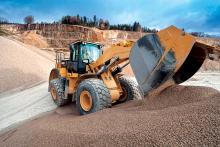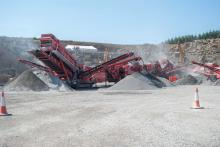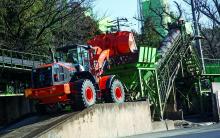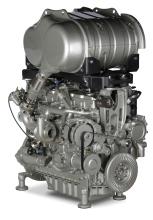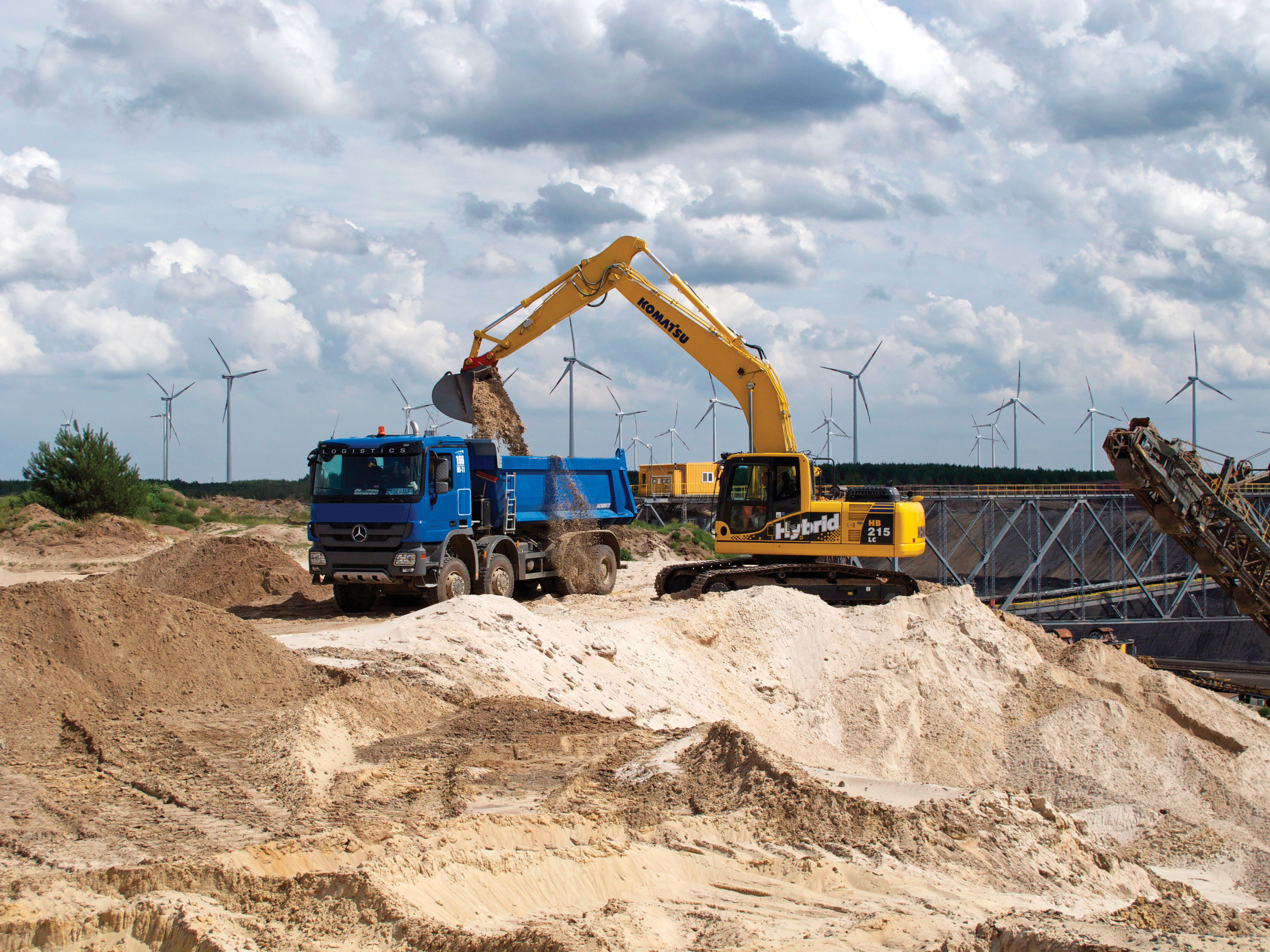
The crawler excavator market has seen many new and improved machines this year, several benefitting from an increasing move towards new technologies such as hybrid drives. Dan Gilkes reports.
While this year’s
The bad news for customers is that engine technology does not come cheap. Variable geometry turbocharging, high pressure common rail fuel injection and exhaust gas recirculation within the engine, plus exhaust after-treatment such as diesel oxidation catalysts, selective catalytic reduction systems and diesel particulate filters, all have an effect on both the purchase price and on ownership and operating costs.
To combat this rise in price, manufacturers are countering with increased power outputs, faster cycle times and improved productivity. In addition, as mentioned, they are looking at new ways to reduce fuel consumption, such as hybrid technology.
There have been a number of hybrid machines available for some time now, and many prototypes, as manufacturers test the benefits of different systems. Perhaps the most successful is
As an example of what can be achieved with a hybrid, the HB215LC-1 is based on the conventional PC210-8. However while the standard machine uses a six-cylinder diesel engine to provide the power, the hybrid makes do with a four-cylinder motor and a stack of super capacitors to drive the hydraulics.
The electrical energy is captured from an electric slew motor/generator and stored in the super capacitors, assisting the engine when the operator calls for digging power. The result is an impressive 25% fuel saving, when the machine is used in an operation that calls for repetitive slewing.
This not the only way to store energy however and
When the machine calls for engine power the system releases the hydraulic energy to boost the engine’s performance. It is still early days, but Hyundai is claiming that up to 20% fuel savings are possible.
Controlled by the Liebherr Power Train Competence Centre, the machine takes electrical energy from the slew brake and stores it in super capacitors. However it also has a pressure reservoir and a generator to store hydraulic energy delivered by the lowering of the main lift cylinders.
Energy is returned to the driveline either through the electric slewing motor or to the hydraulic pumps, reducing the power required from the diesel engine.
If that’s not futuristic enough for you, how about a Formula One KERS-style hybrid driveline? UK engineering specialist Ricardo is working on an energy recovery system that can be integrated into an excavator’s existing hydraulic system.
Known as the High Efficiency Excavator project, the system uses a 5kg carbon fibre flywheel, encased in a vacuum-sealed cartridge to minimise friction. The flywheel spins at up to 30,000rpm using a magnetic coupling, which is driven from a hydraulic motor.
Power for the motor comes from oil returning from the hydraulic system, so energy is recovered from boom lowering, dipper extension and slewing. The faster the flow of oil through the motor the greater the rotational speed achieved by the flywheel.
Energy is returned to the hydraulic system by simply using the flywheel and its magnetic coupling to then drive the hydraulic motor and assist the engine in powering the hydraulic system. The peak power from the flywheel can be as high as 100kW, but the progressive release of flywheel energy allows a controlled amount of power to be put back into the system for short bursts. Ricardo says the system is potentially low cost compared to super-capacitors and battery packs, and that it suffers no performance degradation over its lifetime.
More importantly it can also be retrofitted to almost any excavator. Ricardo says that when used on a 24tonne excavator, fuel savings could cancel out the cost of the flywheel energy recovery system within a year.
Of course conventional excavators have not been forgotten, with most manufacturers launching updates this year.
The machines also get an improved cab environment, new monitors and control systems and the possibility of greater interaction with the firm’s LiveLink telematic system.
It’s a similar story at
Likewise
The system, which has a control valve to efficiently split the output from the three pumps in the most efficient manner, is said to reduce fuel consumption by between 20-25% on 20tonne class machines.
Liebherr’s latest quarry excavators include the 60tonne R960SME, replacing the super mass excavation derivative of the R954C, and the R976, replacement for the 90tonne R974C. Both machines get a new cab with improved space and an ergonomically improved layout to switchgear and controls. Liebherr’s touchscreen display makes it easy to set the working modes, functions and attachment settings.
The R976 is powered by a Stage IIIB/Tier 4 Interim Liebherr V8 engine, delivering 400kW, while the smaller R960SME has a six-cylinder 250kW Liebherr motor.
Hybrid technology is not the only forward-looking system being incorporated in Komatsu excavator design. The company has joined forces with
The PC210LCi-10 has the Topcon system built-in at the factory. While the machine can be used as a conventional excavator, the machine will not allow the operator to dig below a preset grade or height. This reduces the time required to finish grades and flat-bottom trenches, saving time on-site and making the ‘intelligent’ machines up to 40% more productive. In the right application Komatsu says the system can pay for itself within one year, and it believes that this sort of control system will become standard within the next decade.
It would appear that the progressive march of technology looks set to continue for some years to come, whether in engine emissions, alternative power sources and machine control systems. The only good news is that, despite increased cost and complexity, productivity and performance should in most cases be better than the machines that we have on-site today. In a fast-changing equipment market, the excavator remains at the forefront of development and design.
Wheeled loaders are subject of hybrid trials
Wheeled loaders have also been the subject of a number of hybrid trials, thanks to the repetitive cycle of dig and load. They tend to take the kineticenergy from the brake system, in much the same way as an electric car usesbraking to generate electricity. However few are yet ready for commercial sale.
Instead, loader manufacturers seem to be turning their attention to more economical and ef_ cient use of the standard diesel engine, through constantly variable transmissions (CVT) or what are now being dubbed hydro-mechanical variable transmissions (HVT).
Manufacturers have traditionally gone down one of two routes with wheeled loader drivelines, opting for either a full hydrostatic transmission with a hydraulic pump and motors driving the axles or the wheels direct, or a powershift mechanical automatic transmission powering conventional axles.
For many, the split has been based on size and weight of the machine, as hydrostatic drives are favoured for smaller equipment and mechanical powershift transmissions better able to cope with the demands of higher powered production machinery. Liebherr has been the main exception to this rule, using hydrostatic drive right through its wheeled loader range.
This year both Liebherr and Caterpillar have introduced wheeled loading shovels using HVT transmissions. Based on the L586 loader, the continuously variable power-split transmission combines mechanical and hydrostatic drivelines.
The diesel engine’s power output is divided between the two sections of the driveline, reducing energy transmission losses and increasing efficiency. An electronic transmission control system ensures that the highest possible ratio is selected and allows the diesel engine to run at a lower speed, which in turn reduces fuel consumption.
The combined effect of the two halves of the transmission is increased performance at all stages of the work process. When driven slowly, or when picking up material, the wheeled loader is largely driven through the hydrostatic transmission. As speed increases or during lengthy work cycles, the proportion of power transmitted mechanically increases.
Low internal losses in the mechanical driveline are the key to its high efficiency. Liebherr plans to adopt this driveline concept across its complete range of large wheeled loaders.
With Caterpillar’s 966K XE loader the machine uses a hydraulic pump and motor, what Cat is calling a variator unit, that provides ratio flexibility and reduces heat build-up within the transmission.
Power is transmitted through the variator unit as well as through a parallel mechanical gear path, the two being combined through a series of planetary gears to maximise efficiency over a wide range of operating conditions.
The 966K XE has two pedals and the transmission automatically reduces speed when engaging the stockpile or quarry face, leaving full power for the lift arm circuit.
Caterpillar claims that the transmission system offers up to a 25% fuel efficiency gain. There seems little doubt that the transmission will find its way onto other Cat loader models in the future.

